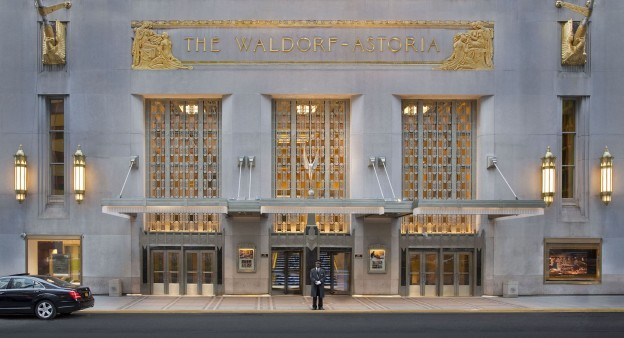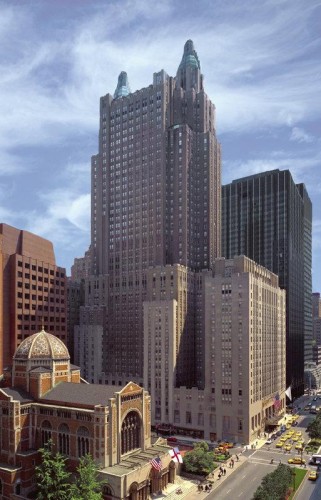
For nearly a century, the Waldorf-Astoria has been the definition of luxury hospitality in New York City. Its lavish suites and ornate Art Deco architecture have made the hotel a longtime favorite of celebrities and U.S. Presidents. Very soon, this landmark building will begin a new chapter in its famed history, as a new owner has plans to convert the building to a residential property. The plan, currently being considered by the hotel’s new owner, was shared less than two years after the property was acquired from Hilton Hotels Corporation. The buyer was Chinese company Anbang Insurance Group, and at a price tag of $1.95 billion, the purchase was the most expensive hotel transaction ever recorded. Beginning in 2017, the hotel will undergo renovations that will convert nearly 75% of its guest rooms into luxury condominiums. Anbang could spend more than $1 billion to complete the renovations.
Located on Park Avenue between East 49th and 50th streets, the Waldorf-Astoria (right) was the largest, tallest hotel in the world when it opened in 1931
Although Anbang has not publicly shared the motivation behind the conversion, many of the hotel’s guests have suggested in recent years that the historic building is long overdue for an upgrade. Rather than simply improving the rooms however, Anbang may be looking for a quick return on their investment via condo sales. Other luxury hotels in New York City have followed a similar conversion strategy in the recent past, including the famous Plaza Hotel, which unveiled 181 luxury condos in 2008. In fact, because this strategy has gained more and more interest in recent years, in 2015 the New York City Council passed a two-year moratorium on hotel-to-condo conversions in order to study the economic impacts of such changes. Luckily for Anbang, transactions occurring prior to the decision are exempted from the temporary ban.
Anbang may take their time exploring renovation options, however, due to the recent price pressures on Manhattan’s high-end condo market. After a robust seven-year building cycle that has seen many new condos reach eight figures, some analysts have begun to speculate that the market has already passed its peak and is now flooded with excess supply. Time will tell if there is any truth to these claims.
While it remains to be seen just exactly what Anbang’s plans for the Waldorf-Astoria will be, the property will continue to stand as an icon of luxury in both New York City and beyond, whether as a hotel or as luxury condominiums.

